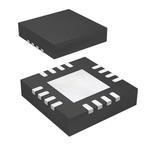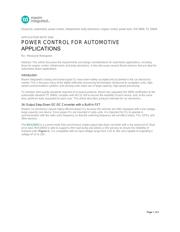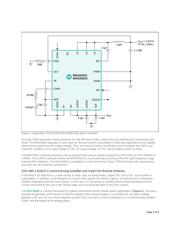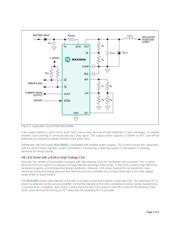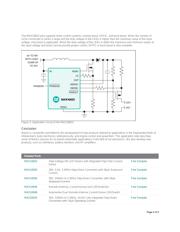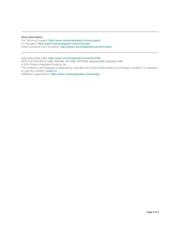herunterladen

Keywords: automotive, power control, infotainment, body electronics, engine control, power train, ISO 9000, TS 16949
APPLICATION NOTE 5346
POWER CONTROL FOR AUTOMOTIVE
APPLICATIONS
By: Masayuki Nakagawa
Abstract: This article discusses the requirements and design considerations for automotive applications, including
those for engine control, infotainment, and body electronics. It also discusses several Maxim devices that are ideal for
automotive power applications.
Introduction
Maxim Integrated's analog and mixed-signal ICs have been widely accepted and acclaimed in the car electronics
market. This is because many of the digital arithmetic processing technologies introduced to navigation units, high-
speed communications systems, and sensing units make use of large-capacity, high-speed processing.
To maintain strict quality standards required of on-board products, Maxim has upgraded ISO 9000 certification to the
automobile standard TS 16949, complies with AECQ-100 to ensure the reliability of each device, and, at the same
time, performs tests requested by each user. This article describes products intended for car electronics.
3A Output Step-Down DC-DC Converter with a Built-In FET
Modern car electronics require highly efficient power ICs because the vehicles are often equipped with a low-voltage,
large-capacity core device. Since power ICs are mounted in radio units, it is important for ICs to operate in
synchronization with the radio unit's frequency so that the switching frequency will not affect radios, TVs, GPSs, and
other devices.
The MAX20003 is a current-mode fully-synchronous single-output step-down converter with a low quiescent of 15µA
at no load. MAX20003 is able to support a 45V load dump and utilizes a 45V process to ensure the reliability of
onboard units (Figure 1). It is compatible with an input voltage range from 3.5V to 36V and capable of outputting a
voltage of 1V to 10V.
Page 1 of 5

